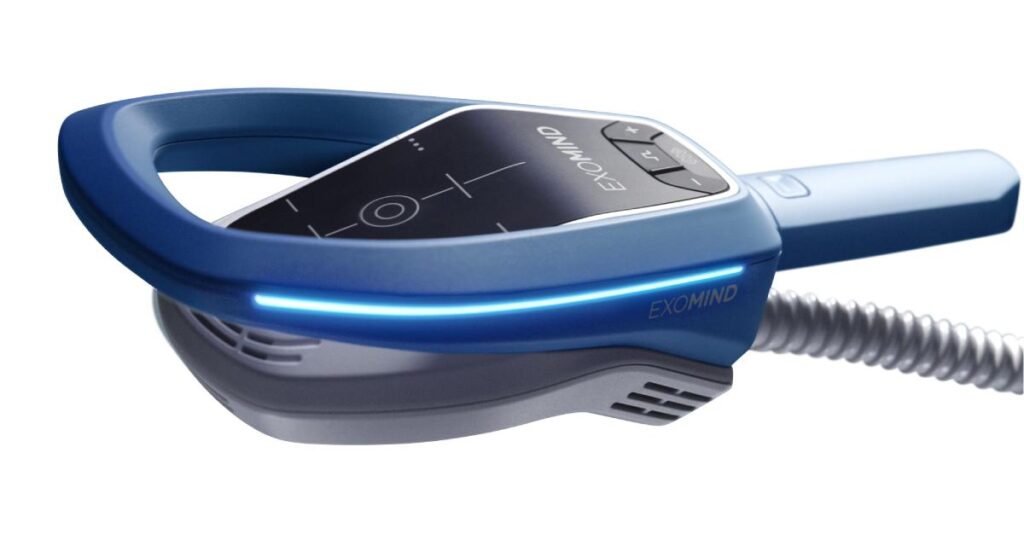
36% of people say day to day decisions feel more stressful than before. Add long commutes, tight deadlines, and family logistics and it is easy to see why focus slips and energy dips through the day. If you are looking for the benefits of Exomind treatment for focus, energy and calm, you probably want something simple, safe, and practical.
Adults also spend about 6 hours 38 minutes online per day, which can chip away at attention and sleep if habits slide. Many readers are not seeking a cure. They want a clear, doctor-led explainer so they can decide whether a short, clinic-based program makes sense for their routine.
We’ve covered what Exomind is, what a session feels like, who it may suit, and who should wait and talk to a doctor first. Nothing on this page is medical advice. It is a starting point for a careful decision.
Who should wait and speak to the doctor first
- History of seizures
- Presence of Metal / Electrical implants in the head and neck region
- Recent head injury
- Pregnancy considerations
- Active scalp infection or skin condition on the treatment area
- Significant brain lesions or complex neurological conditions
TL;DR
- Exomind is a non invasive, clinic session using targeted electromagnetic pulses to support focus, steadier energy, and a calmer baseline.
- Sessions are about 25 minutes including quick checks, with walk-in, walk-out comfort.
- Typical plan: 6 sessions, each session is spaced at an interval of 5 to 10 days.
- Most effects are mild and short lived. Screening lowers rare risks.
- Best for screen-heavy professionals who pair it with steady sleep, hydration, and brief screen breaks.
What is Exomind?
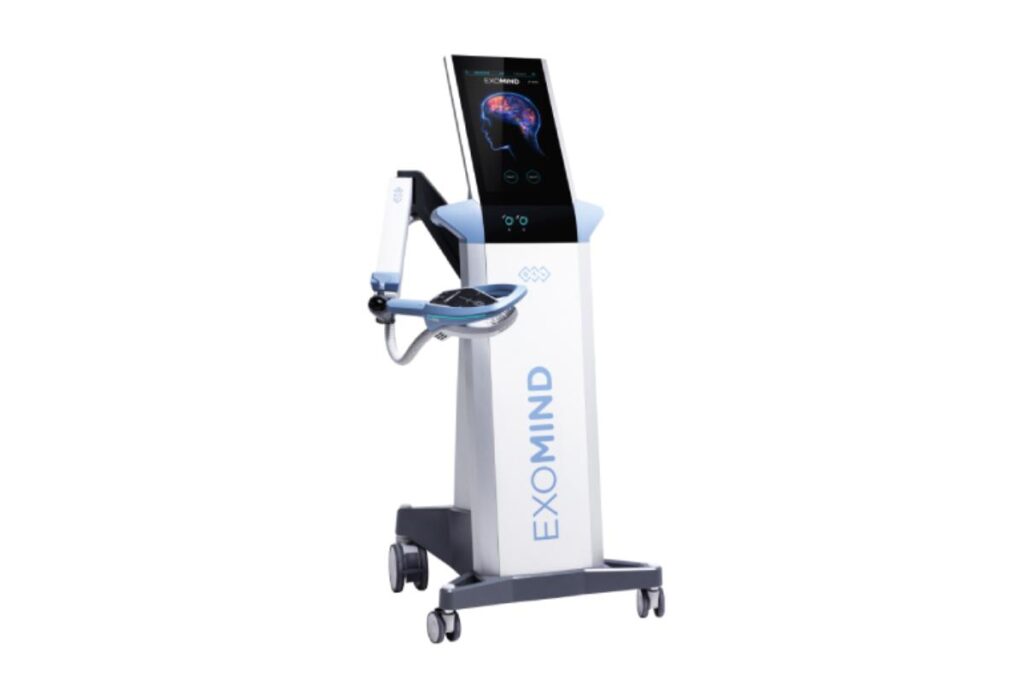
Exomind is a non invasive, clinic based brain wellness session that uses targeted magnetic pulses to support focus, steadier energy, and a calmer baseline.
It is drug free and does not use sedation. You sit in a chair while a device sends brief pulses to a focus and mood hub.
A single session usually takes around 25 minutes including brief checks to get you ready before you walk out and get on with your day.
What Exomind is not matters too. It is not electroconvulsive therapy. There is no seizure activity, and it does not change your personality. You stay awake and can speak throughout the session.
At a simple level, the pulses create tiny currents in the outer layers of the brain. With repeated visits, this practice can encourage healthy pathways through a process called neuroplasticity.
Exomind is not a cure or a replacement for medical care.
How an Exomind session feels, step by step
From check in to walking out, the process is predictable and usually comfortable.
Pre-session screening and personalization
You start with a short health review and a few quick questions about work, sleep, and goals. Bring a list of medicines and tell us about any implants near the head.
A clinician marks a spot on the scalp and does a motor threshold check to set a safe starting level. Earplugs are offered. If anything feels strong, settings are eased.
All sessions are screened and paced by Dr Anjali.
What to wear and bring:
- Light, comfortable clothing that lets you sit still.
- Skip heavy hair products on the day.
- Bring glasses if you use them for reading forms.
- Eat and hydrate as you usually do.
During the session
You sit in a reclined chair. The coil rests near the scalp and delivers brief pulses to a focus and mood hub. Most people feel a light tapping or tingling on the skin and settle into the rhythm in a few minutes.
A visit usually takes about 25 minutes, depending on comfort and protocol.
Noise and feel:
- You may hear a clicking sound from the coil.
- Tingling is common on the treatment side.
- Jaw or forehead muscles can twitch a little. This is expected and fades.
Comfort tweaks in real time:
- Tiny shifts in coil position to reduce pressure points.
- Gradual intensity changes so you adapt smoothly.
- Short pauses if you need a break.
- A small cushion or cap if the skin feels sensitive.
What many working professionals prefer:
- Sessions fit into a lunch break or the school run window.
- You can read, listen to music, or rest with eyes closed.
- Phones stay on silent to keep the room calm.
After the session
You can walk out and continue your day. Some people notice a mild scalp ache or a light headache that settles soon with rest or simple pain relief if approved for you.
Brief lightheadedness can occur. These effects are short lived in most cases.
Safety notes for peace of mind:
- Serious effects are uncommon. The estimated seizure risk in TMS practice is under 0.01% per session, and screening helps keep risk low.
- Tell the clinician how you felt so we can fine tune the next visit.
- Avoid making travel decisions until you know how you feel.
Practical tips for Mumbai schedules:
- Book at the same time of day so your body routine stays steady.
- Avoid stacking a heavy workout right before your slot.
- If traffic from South Mumbai is tight, keep a 15 minute buffer on either side.
The benefits you may notice
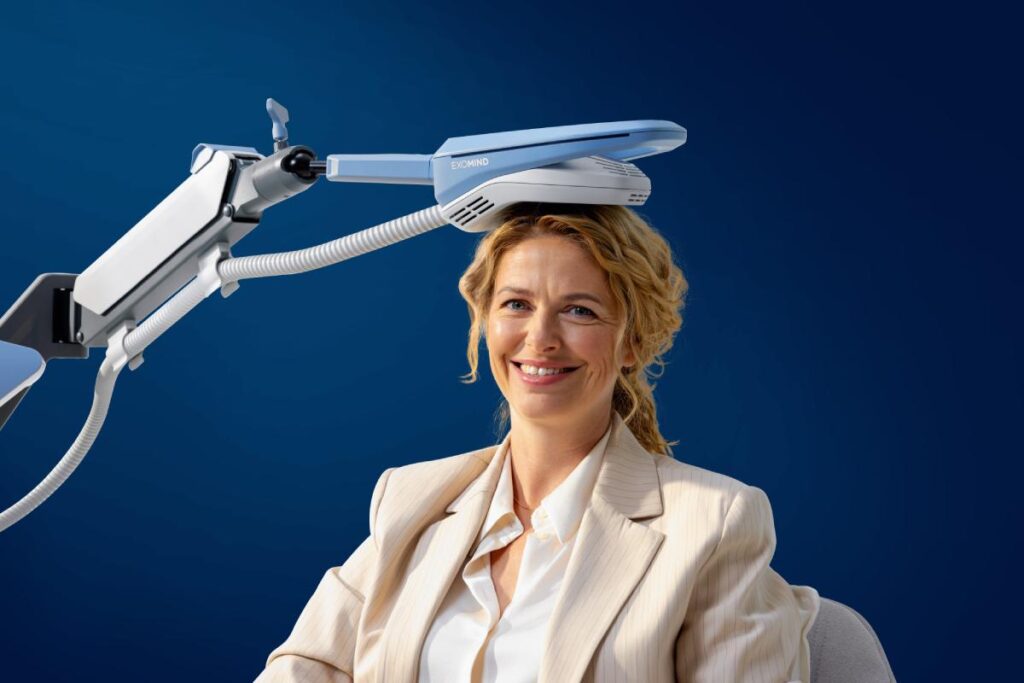
Changes tend to be subtle at first and build across a short program.
Focus support at work or study
You may find it easier to start and stay with a task. Many people report fewer tab switches, smoother handoffs between tasks, and better recall during meetings.
Try 40 to 50 minute focus blocks with a short stretch in between to make the most of each visit.
Steadier daytime energy
A steadier curve through the day helps you get more done before late evening. Midday dips can feel smaller when sleep, meals, and light movement are in place. A five minute walk after lunch often helps you feel alert for the next call.
A calmer baseline under pressure
When demands spike, the reaction can feel shorter and easier to manage. Readers often notice a clearer head on the commute and a simpler wind down before bed. Simple cues help, like slow breathing before a tough meeting or stepping away from the screen for two minutes.
Habits still matter
Pair sessions with a steady sleep window, morning light, and short screen breaks. Avoid caffeine and nicotine 3-4 hours before and after the treatment and hydrate well.
Adults need at least 7 hours of sleep and about 1 in 3 adults sleeps less than that, which can affect attention and mood the next day.
Results vary and depend on many factors. No guarantees.
Is Exomind right for you
A 1 minute self check helps most readers decide whether to book.
Good fit signals
You spend long hours on screens and want a non invasive clinic visit that fits a workday. You prefer a doctor led plan, steady comfort checks, and small, practical changes you can feel in real life. Founders, managers, designers, writers, and parents who juggle busy mornings often find this format easy to stick with.
Works best when routines align
Sessions pair well with simple habits. Keep a steady sleep window, hydrate, and time caffeine earlier in the day.
Avoid caffeine and nicotine 3 to 4 hours before and after the treatment. Consumption of Alcohol and other psychoactives is also strongly discouraged throughout the treatment duration of weekly Exomind sessions.
Short screen breaks help too. Try a 40 to 50 minute focus block, then a two minute walk or stretch before the next call. Bring any notes on what helped or hindered focus so settings can be fine tuned.
Who should talk to the doctor first
Use this list to start a careful conversation. Some readers may be advised to wait or choose another option.
- Past seizures or a diagnosis of epilepsy
- Metal in or near the head, for example aneurysm clips, stents in the neck or brain, cochlear implants, deep brain stimulators, or metal fragments
- Facial tattoos with metal sensitive inks
- Cardiac pacemaker in place
- Recent head injury or active scalp issues on the treatment area
- Pregnancy considerations or complex neurological conditions
These examples reflect hospital guidance for rTMS safety screening and help us decide fit case by case.
Your program and expectations
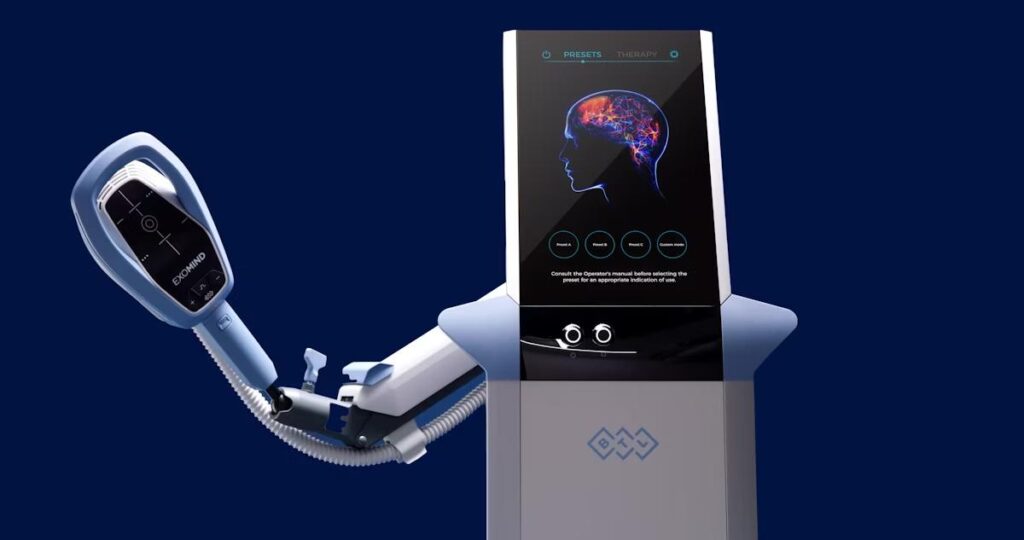
Short, predictable visits that fit a Mumbai schedule.
Program at a glance
- 6 sessions in total
- Spacing 5 to 10 days between visits to balance comfort and momentum
- Each visit takes about 25 minutes, then you head back to your day
How we plan your course
At your first visit we note your goals, set a starting intensity, and agree on a schedule you can keep. Consistency matters. Habit research in everyday settings found a median of 66 days for a new routine to feel automatic, which is why we keep appointments steady and easy to follow.
Sample schedules that work for busy readers
Pick one that matches your week. We adjust if your workload or commute changes.
- Lunch-break plan Week 1: Tue Week 2: Tue or Wed Week 3: Tue, Spacing stays near 5 to 10 days so you keep momentum.
- Once-a-week plan Week 1 to Week 6: Saturday mornings Works for parents and teams with weekday deadlines.
- Every 7–10 days plan Weeks 1, 2, 3, 4, 5, 6, Useful during travel or quarter-end crunch. We review progress before spacing further.
Early signals many people track
- Calmer mornings and fewer midweek dips
- Easier attention during meetings
- Less end-of-day mental clutter
- Sleep feels more settled when your routine is steady
Keep a simple log on your phone:
- Focus 0–10, Energy 0–10, Stress 0–10 each morning
- Minutes of sleep last night
- Screen breaks taken during the workday
Durability context
Benefits tend to add up across the program and can continue for a period after you finish. Published brain-stimulation literature describes effect durability in some settings. Timelines vary by person, which is why we plan reviews instead of setting promises.
Booster sessions
If old patterns creep back during a heavy quarter or after travel, we may suggest a booster. A single visit or a short pair is common. Timing depends on your log, your schedule, and how you felt during the original course.
If you miss a visit
- Try to reschedule within the same week
- Keep your next appointment as planned
- Bring notes on sleep, stress, and workload so settings can be fine tuned
Tracking progress and reviews
- Baseline on day one with your 0–10 scores and a short goals note.
- Mid-course review at session 3 to check comfort, spacing, and any early changes.
- End review at session 6 to decide whether to stop, add a booster plan, or space further.
If you have travel or timing constraints, contact the clinic and we will help plan your program.
Safety, comfort, and screening at GCD
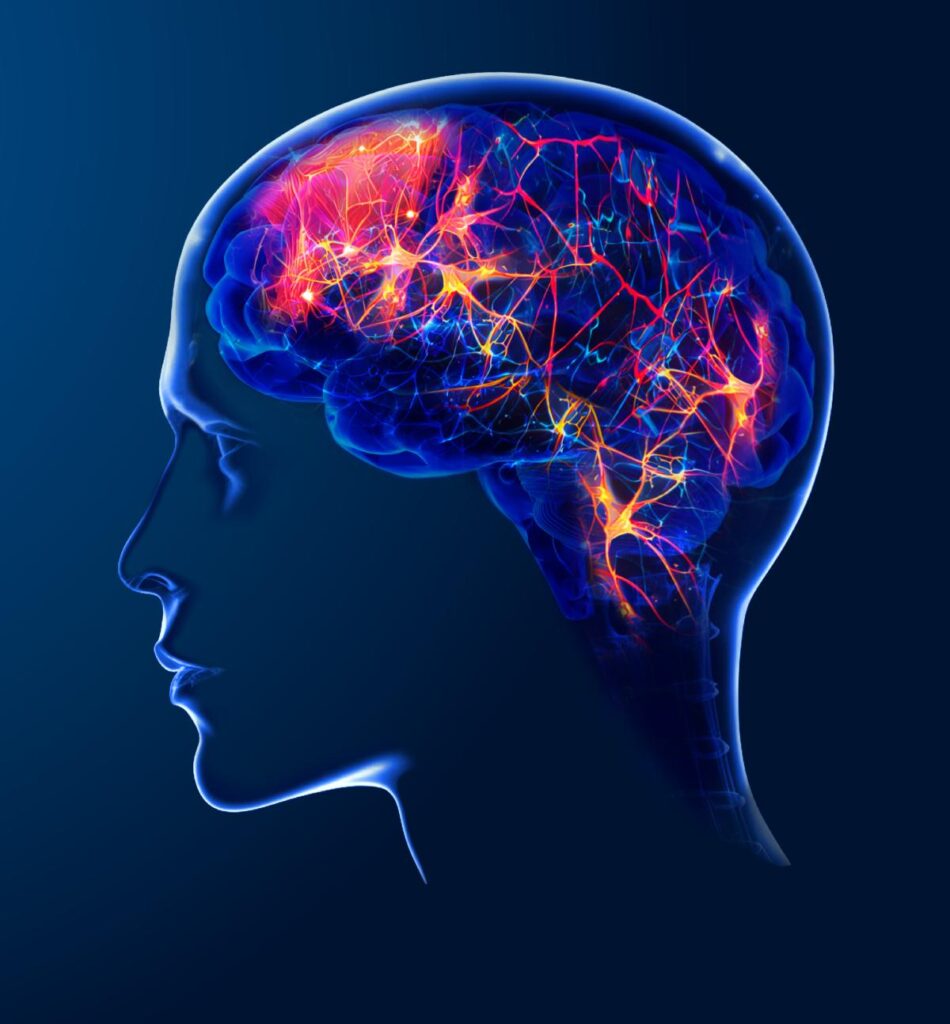
Safety starts with screening and continues in every visit.
What screening covers
We review your health history, medicines, sleep, and any implants near the head. We check hearing protection, mark the treatment spot, and agree on a starting intensity that feels manageable.
Common and uncommon effects
Most effects are mild and short lived. People may notice scalp tenderness, a light headache, or brief fatigue.
In research summaries, headache is reported in about 28%, fatigue 8.6%, and scalp discomfort 8.3% of sessions in certain study formats, with other effects under 5%.
Less common effects include dizziness or light sensitivity.
Rare risks and how we reduce them
A seizure is the rarest concern. Large reviews estimate about 7 per 100,000 sessions, with risk higher only when clear triggers are present. Careful screening, steady sleep, and avoiding threshold-lowering medicines on the day help keep risk low.
Why GCD Clinic, Colaba

Doctor led screening, a comfort focused setup, and structured follow up.
Your plan is set and checked by the treating dermatologist. Sessions are paced and reviewed by Dr Anjali. You get clear explanations, a simple safety check each visit, and small intensity tweaks based on how you felt last time.
In a large review of 209 studies, patient decision aids increased knowledge by about 12 points out of 100 and nearly doubled the odds of accurate risk understanding compared with usual care. When decision aids were used to prepare for the visit, consultation time did not increase.
Quiet chair, ear protection on hand, and cushions if the skin feels sensitive. We adjust coil position or intensity and take short pauses when needed. You leave with simple after care notes so the next visit starts smoothly.
Practical tips to get more from your sessions
Small habits help your brain do more with each visit.
- Keep a steady sleep window. Go to bed and wake up at roughly the same time, even on weekends. Get a few minutes of morning light by stepping near a window or taking a short walk.
- Hydrate through the day. Keep a water bottle at your desk. Time caffeine earlier so sleep stays settled. Many readers stop coffee by mid afternoon.
- Use short screen breaks. Work in 40 to 50 minute focus blocks, then step away for 2 to 5 minutes. Stand, stretch, or look at a far point to reset the eyes.
- Move a little after lunch. A five minute walk or easy stair climb helps the early afternoon feel steadier.
- Keep your phone on silent during the visit. Arrive with clean, dry hair and skip heavy hair products that day.
- Eat as you usually do. Avoid skipping meals before your slot. A light snack is fine.
- Breathe slowly if you feel tense. Try a simple 4 in, 6 out pattern for a minute before the session starts.
- Plan meetings as normal after the visit. Decide based on how you feel after the session, and arrange transport for the first visit if unsure.
- Keep a notes app for quick check ins. Track Focus 0–10, Energy 0–10, Stress 0–10 each morning, plus sleep time and any screen breaks. Bring this to session 3 and session 6 so we can fine tune settings.
FAQs About Exomind Treatment Benefits
Exomind uses targeted Electromagnetic pulses to only stimulate Left Dorsolateral Prefrontal Cortex in the brain. Many notice steadier focus across a short program. You stay awake, there is no anaesthesia, and it is not electroconvulsive therapy. This is support care, not a cure. Results vary.
Most programs run minimum of 6 sessions. Each session is repeated every 5 to 10 days or once a week. Early changes are often noticed after session 2 or 3 and build across the course. Some people feel benefits for a period after finishing, then return for a planned booster if old patterns creep back. Timelines vary.
Expect a light tapping or tingling on the scalp. Ear protection is offered. Many relax within a few minutes. A visit usually takes about 25 minutes, and you can walk out and continue the day.
Common, short-lived effects include scalp tenderness, light headache, or brief fatigue. Less common are dizziness or light sensitivity. Talk to the doctor first if you have a seizure history, metal near the head, recent head injury, pregnancy considerations, or complex neurological conditions. Guidance reflects rTMS patient info.
It supports attention for many readers when paired with steady sleep and short screen breaks. Blink rate can drop by about 60% during screen use, which is why timed breaks help eyes and focus. Try the 20-20-20 rule and short walks.
It uses similar magnetic principles but is set up as a clinic-based wellness program. It does not replace medical care. Many pair sessions with needle-free options such as EMFACE or Exion Face on a paced plan. Your clinician will screen suitability and schedule so comfort and rest are respected.
Conclusion
Nearly 47% of waking time is spent thinking about something other than what we are doing, which is why focus can feel slippery on packed days.
Exomind offers a short, in-clinic way to support steadier attention, daytime energy, and a calmer baseline.
Sessions are screened, paced, and adjusted. Habits like a steady sleep window, morning light, hydration, and brief screen breaks help your brain get more from each visit.
If you want a calm, doctor-led way to test whether this fits your routine, book a consultation with Dr Anjali to discuss screening, timing, and a simple plan you can keep.
